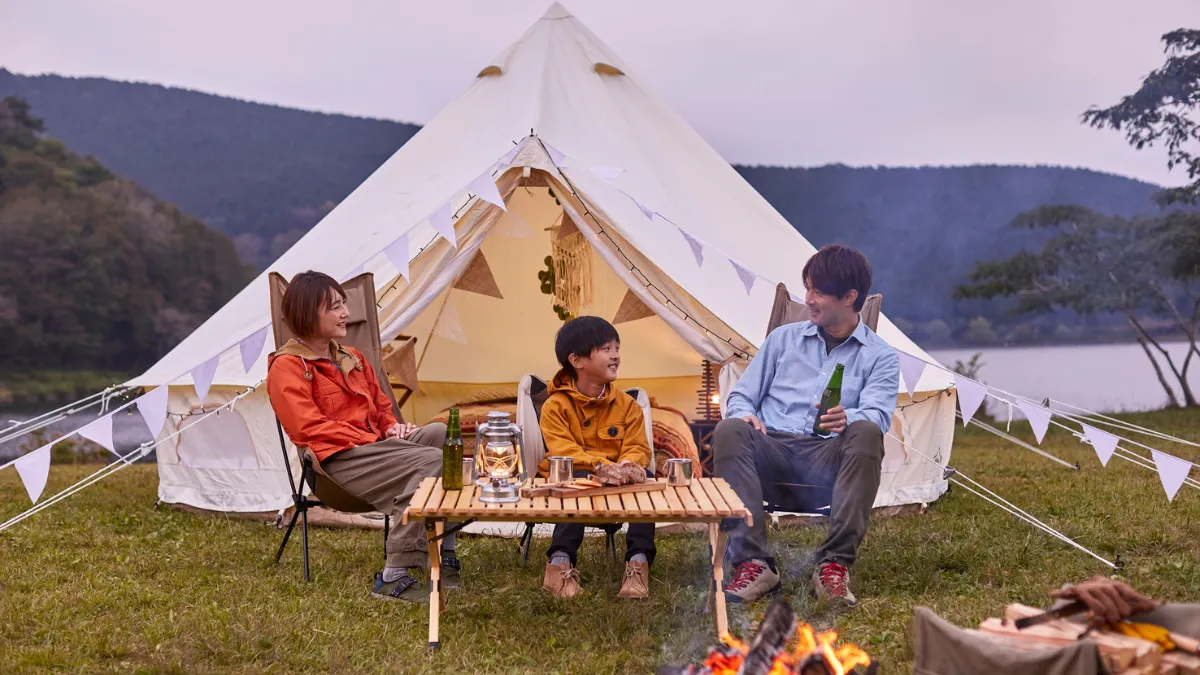The difference between a dream camping trip and a cold, miserable ordeal often comes down to one thing: what’s in your pack.
We’ve all felt that packing anxiety. You drive for hours, finally pull into the campsite, and as the sun starts to set, you get a sinking feeling. Did you forget the tent poles? Or worse, the headlamps?
This isn’t just another packing list. This is your actionable guide to the 21 camping must-haves for 2025. We’ll show you what you need and why it’s so important, based on expert advice and real-world safety data.
We’ll cover the basics plus modern gear (like portable power) that makes camping better. By the end, you’ll have a confident beginner camping checklist.
The “Campsite Core”: Your Shelter & Sleep System
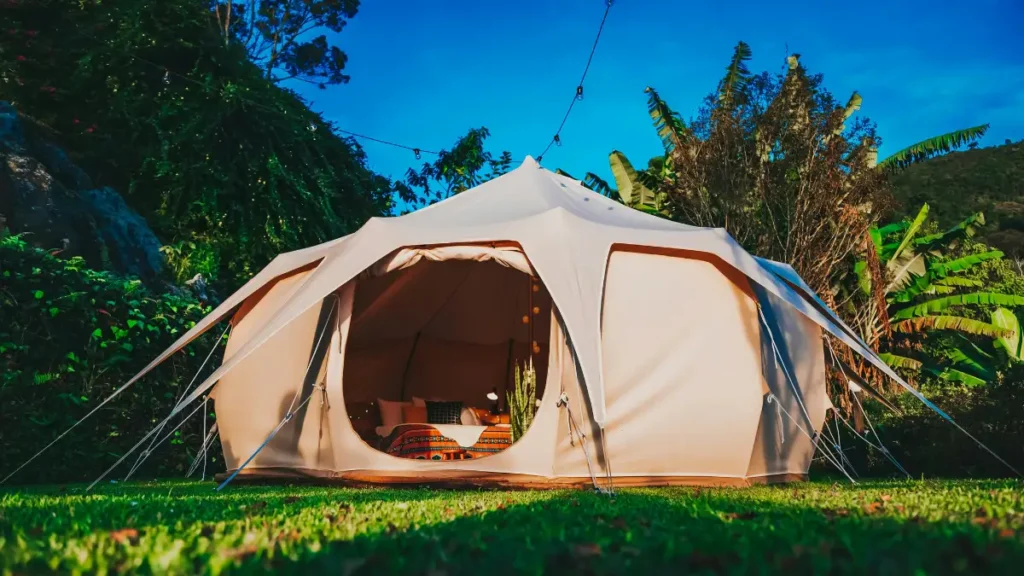
Start by building your “home away from home.” These 5 items are the foundation of a safe and comfortable night. They are the most essential camping gear you will pack.
1. A Reliable Tent (w/ Footprint)
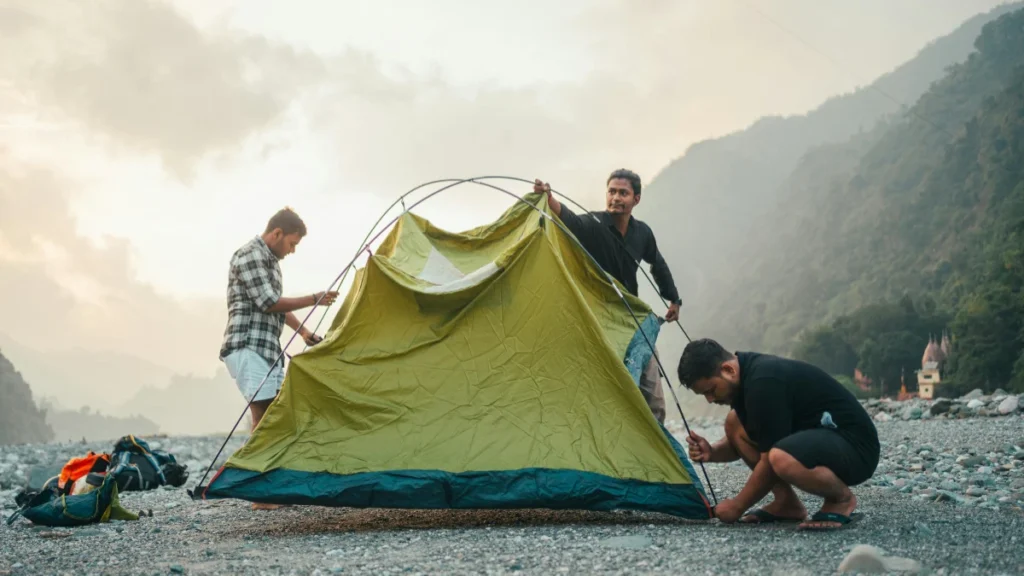
Your tent is your number one defense against wind, rain, and bugs. But choosing the right one can be tricky.
Here’s a key tip: A “2-person” tent is usually perfect for one person plus their gear. A “4-person” tent is comfortable for two people and their bags. Always size up.
You also need a tent footprint. This is a custom-fit tarp that goes under your tent. It is not optional. It protects your tent’s floor from sharp sticks, rocks, and wet ground. Without it, you risk tearing your tent or waking up in a puddle.
Pro-Tip: As REI experts advise, always practice setting up a new tent at home in your backyard first. You don’t want to be fighting with poles in the dark or rain.
2. A Weather-Appropriate Sleeping Bag
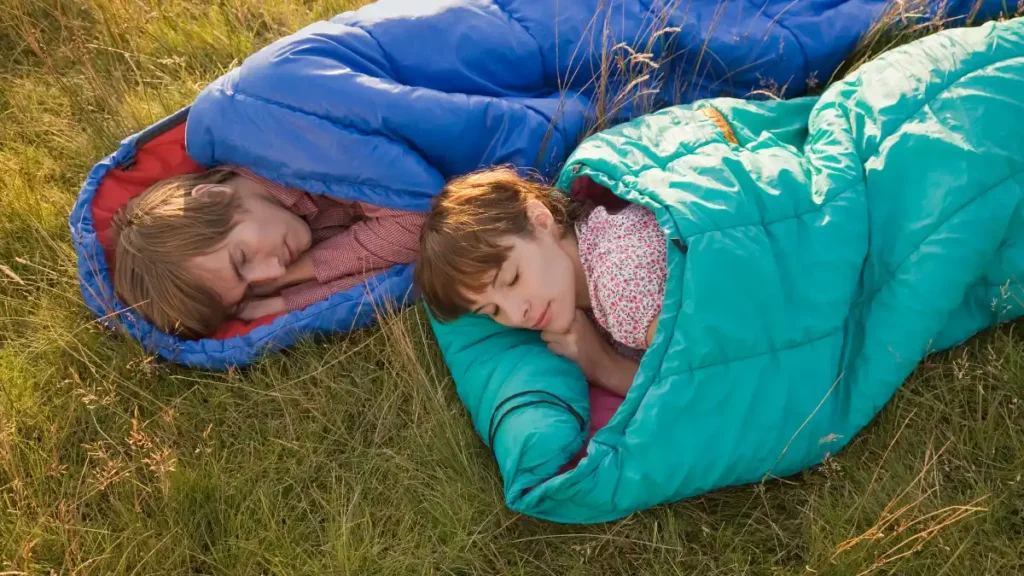
A good sleeping bag is critical for a safe night’s sleep. But the temperature ratings on the bag are confusing.
Most bags show two numbers. Ignore the “Limit” rating. That’s the temperature a “warm sleeper” can survive at, not sleep comfortably. Always look for the “Comfort” rating. This is the temperature at which a “cold sleeper” will feel warm and comfortable.
You also have a choice of fill:
Insulation Showdown: Down vs. Synthetic
Down
- Very light & packs down tiny.
- Super warm (when dry).
- Useless if it gets wet.
- More expensive.
Synthetic
- A bit bulkier.
- Still keeps you warm even when damp.
- Easier to clean.
- Costs less.
For most 3-season camping, a synthetic bag with a “Comfort” rating of 30°F (-1°C) is a great, versatile choice.
3. An Insulated Sleeping Pad
This is the most critical item that beginners forget. A sleeping bag does not keep you warm from the ground. The ground will suck all the heat out of your body, even in a warm sleeping bag.
The sleeping pad’s main job isn’t comfort it’s warmth.
This warmth is measured by an “R-Value.” A higher R-Value means more insulation.
- Summer camping (hot nights): R-Value 1-2
- 3-Season camping (spring, summer, fall): R-Value 3.0 or higher
- Winter camping: R-Value 5+
Sleeping Pad R-Value: Your Seasonal Comfort Guide
Summer Camping
Ideal for hot nights and mild conditions where minimal insulation is needed.
3-Season Camping
Perfect for spring, summer, and fall. Offers good insulation for varied temperatures.
Winter Camping
Essential for cold to freezing temperatures, providing critical warmth from the ground.
Do not go camping without an insulated sleeping pad.
4. A Headlamp (Not a Flashlight)
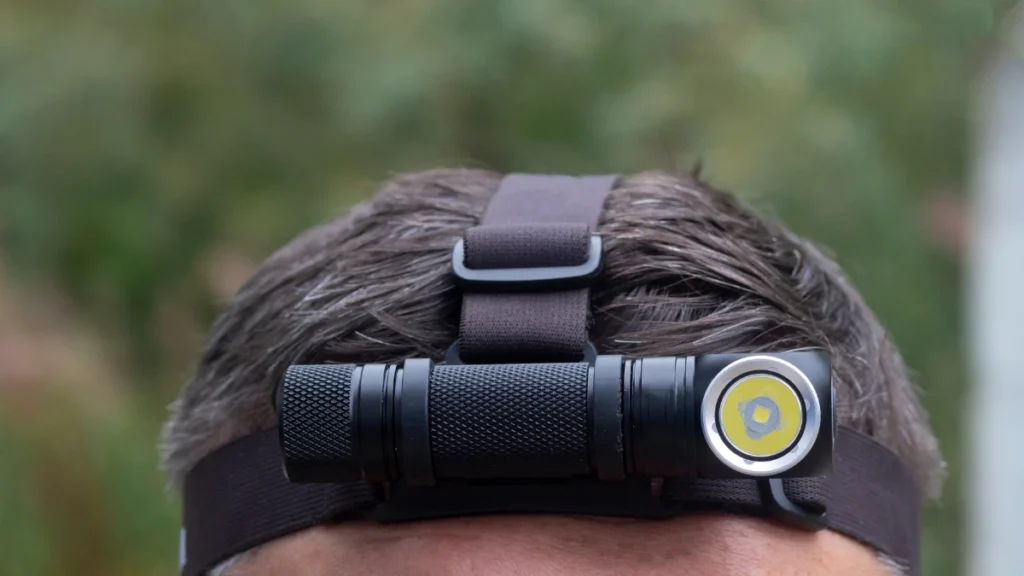
It gets dark. You need to see. But you also need your hands.
A phone flashlight is a bad idea. It drains your phone battery (which you need for navigation and emergencies), it’s not very bright, and you have to hold it.
A headlamp is the solution. It’s bright, weather-resistant, and leaves your hands free for cooking, setting up the tent, or finding things in your pack. Pack one headlamp for every person in your group. And always pack extra batteries.
5. A Proper Camp Chair
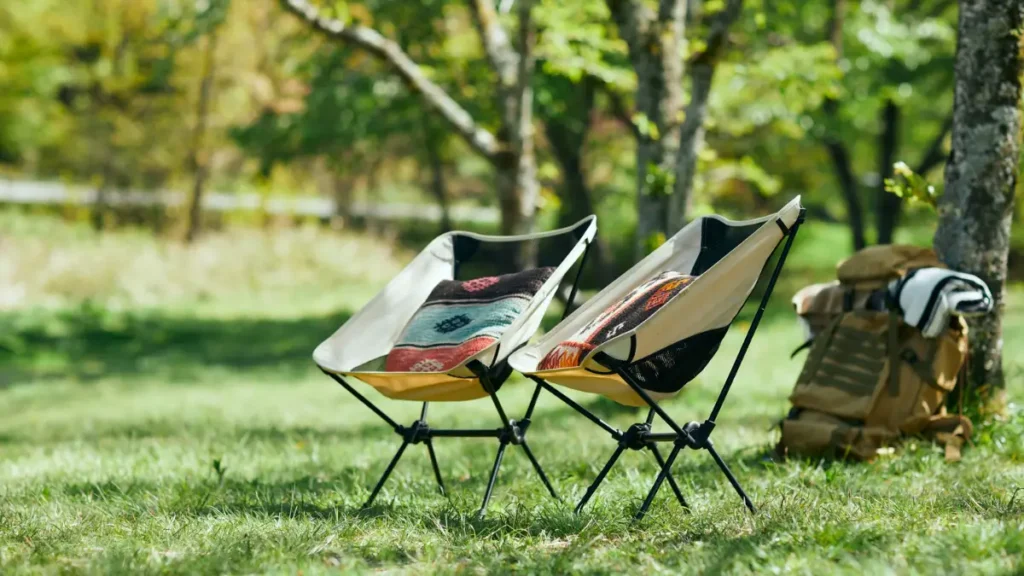
Camping isn’t just about surviving. It’s about enjoying yourself. You can’t relax if you’re sitting on a pointy rock or a wet log. A good camp chair is the #1 item that separates “roughing it” from “relaxing.”
Forget those old, bulky “bag chairs” that cut off your circulation. The 2025 gear market is full of lightweight, packable models (like those from Helinox, REI, or Kijaro). They pack down to the size of a water bottle, set up in seconds, and are incredibly comfortable.
The “Camp Kitchen”: Your Food & Water Essentials
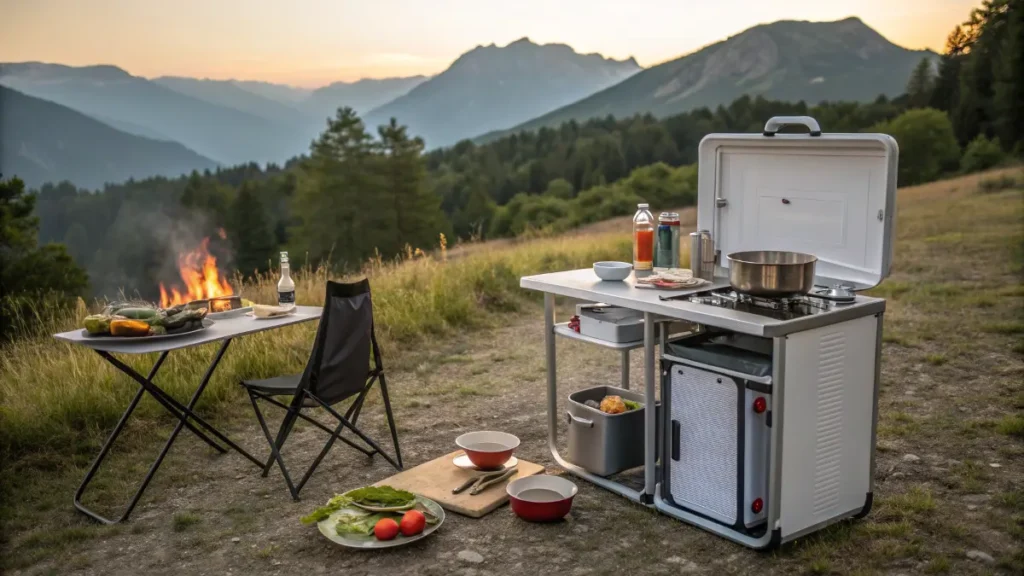
A well-fed camper is a happy camper. But a camp kitchen needs to be safe and simple. Here’s your non-negotiable kitchen setup.
6. Camp Stove & Fuel
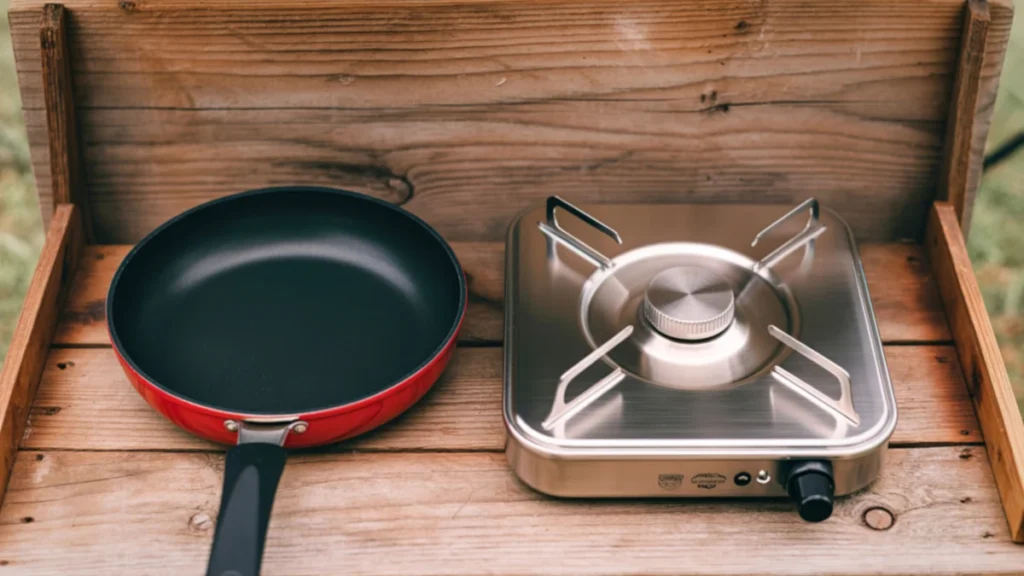
Do not rely on a campfire to cook your food. It’s fun to roast marshmallows, but it’s a terrible way to boil water or cook a real meal.
More importantly, fire bans are extremely common, especially in dry conditions. If you don’t have a stove, you don’t eat.
A simple propane stove (for car camping) or a small isobutane stove (like an MSR PocketRocket or Jetboil) is a must.
Pro-Tip: Always check your fuel level before you leave home.
7. A Dedicated Cook Set (Pot/Pan/Utensils)
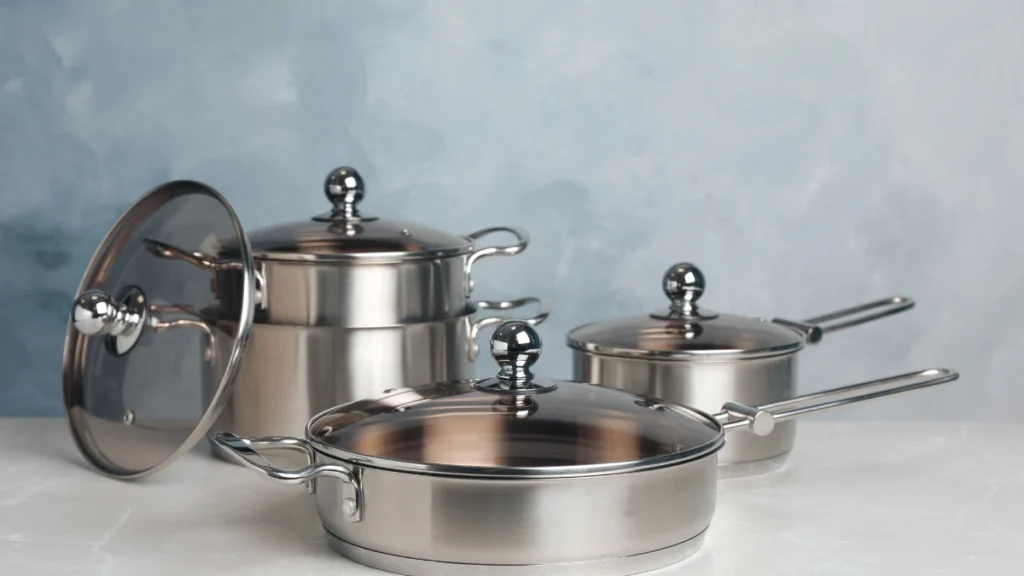
Don’t steal pots and pans from your home kitchen. You’ll ruin them and forget something important (like the can opener).
Buy a basic, dedicated camp cook set. It should include a pot, a small frying pan, a spatula, a stirring spoon, plates, and utensils.
Pro-Tip: Get a large, clear plastic bin and label it “Camp Kitchen.” Keep all your non-perishable kitchen gear in it stove, fuel, cook set, soap, sponges, paper towels, and spices. Now, you can just “grab and go” for any trip and you’ll never forget anything.
8. A High-Performance Cooler
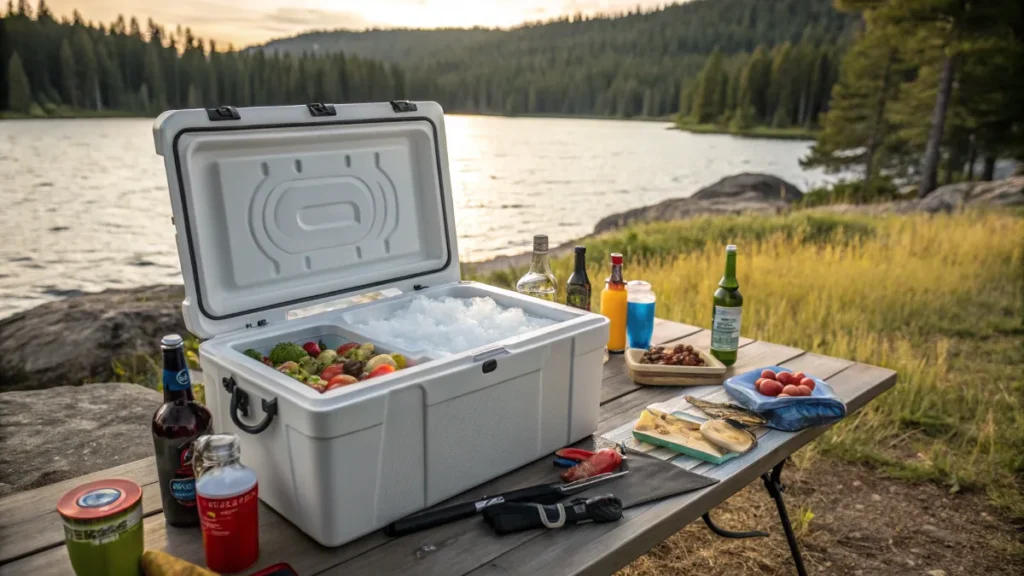
If you are car camping, a good cooler is a game-changer. For years, “3-day coolers” barely lasted one afternoon.
The new roto-molded coolers (like YETI, RTIC, or high-end Coleman models) are different. They are expensive, but they genuinely work. They can keep ice solid for 3, 5, or even 7 days. This means fresh food, cold drinks, and no more soggy packages floating in lukewarm water.
Pro-Tip: Pre-chill your cooler. The day before you pack, fill it with “sacrificial” ice or frozen water bottles. Dump that ice, then pack your food and new ice. Your cooler will stay cold much longer.
9. Water Filter
Never, ever assume water from a stream, lake, or even a campground tap is safe to drink. Clear, fast-moving water can still be full of bacteria or parasites like Giardia, which will ruin your week.
This is a critical safety item. Always bring a way to treat your water.
- For groups: A large gravity filter is easiest.
- For solo/hiking: A Sawyer Squeeze filter is a lightweight, popular choice.
- As a backup: Always carry a few water purification tablets.
Water Wizardry: Your Purification Toolkit
For Groups
A large gravity filter is the easiest way to purify water for multiple people.
For Solo/Hiking
A Sawyer Squeeze filter is a lightweight, popular choice for individual use.
As a Backup
Always carry a few water purification tablets for emergencies.
10. Reusable Water Bottle
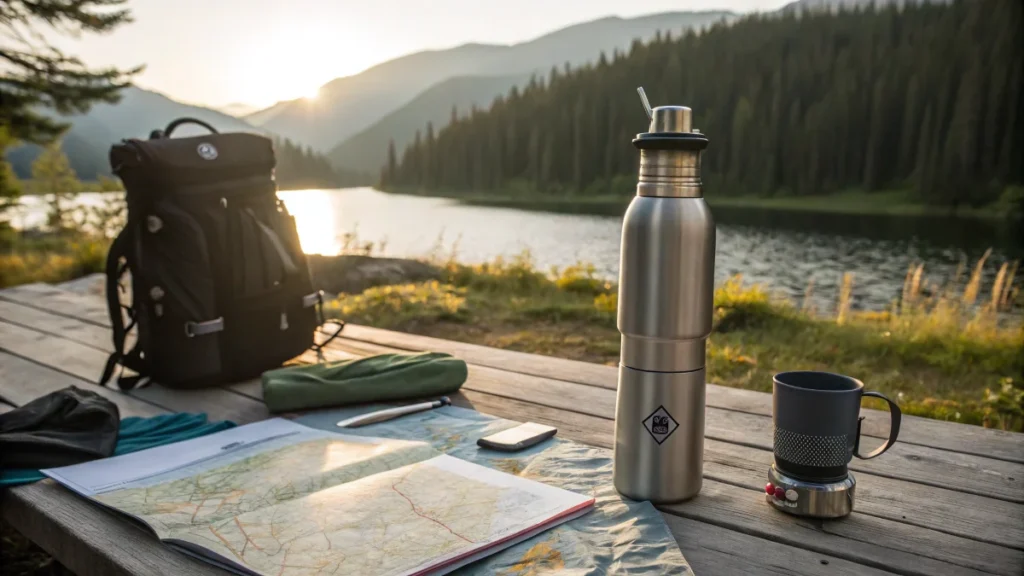
This one is simple, but people still forget it. You need a durable water bottle (like a Nalgene or insulated Hydro Flask) to stay hydrated around camp and on hikes.
11. Trash Bags (Leave No Trace)
This is one of the most important camping must-haves. The rule of the outdoors is Leave No Trace. This means you must pack out everything you pack in.
This includes all food scraps, wrappers, and trash. Do not burn trash in the fire pit (it pollutes and attracts animals) and do not leave scraps for wildlife. Bring two bags: one for trash and one for recycling.
Safety, Navigation & Tools
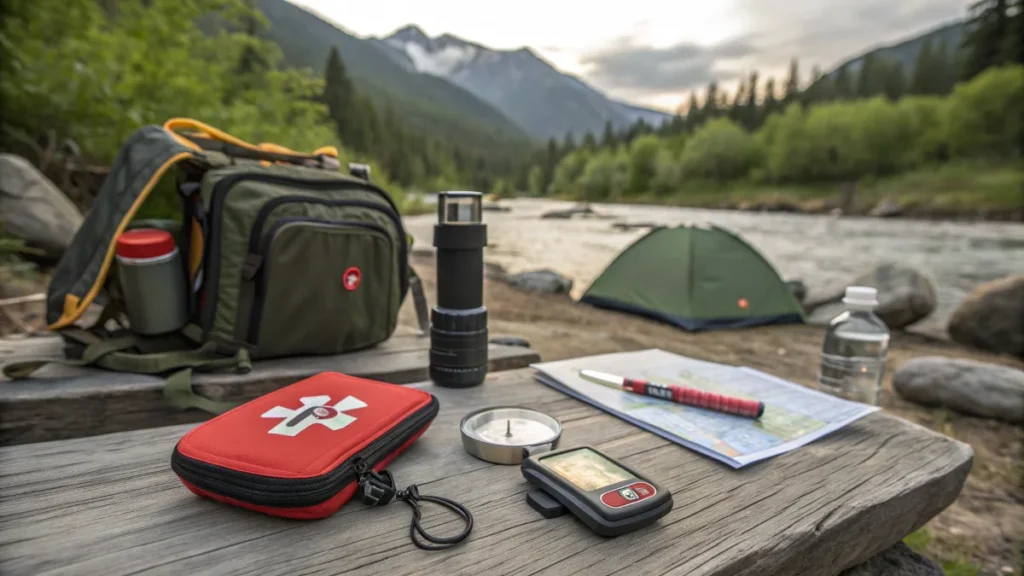
This is the section you hope you never use. But you must always pack it. Do not cut corners here. These items are your insurance policy.
12. A Well-Stocked First-Aid Kit
You can buy a pre-made kit, but you should always add to it. Most kits are just a pile of small bandages.
Make sure your kit is ready for real camp injuries. Add these items:
- Blister care: Moleskin or Compeed patches are lifesavers.
- Sting relief: An after-bite pen for mosquito and wasp stings.
- Pain reliever: Ibuprofen or acetaminophen.
- Antiseptic wipes and Polysporin.
- Any personal medications you need.
First-Aid Essentials
Blister Care
Moleskin or Compeed patches are lifesavers for foot comfort.
Sting Relief
An after-bite pen for mosquito and wasp stings provides quick relief.
Pain Reliever
Include Ibuprofen or Acetaminophen for general aches and pains.
Antiseptics
Pack Antiseptic wipes and Polysporin for cleaning minor wounds.
Personal Medications
Don’t forget any essential personal medications you require daily.
13. Navigation (Not Just Your Phone)
According to National Park Service (NPS) data, “getting lost” and “falling” are two of the top reasons for search and rescue missions. The common factor? People get lost, panic, and make bad choices.
Your phone’s GPS is great, but it is not a reliable navigation tool. Batteries die. Phones break. And you will lose signal.
You need a backup.
- The Old-School Way: A physical map of the area and a compass. (But only if you know how to use them!)
- The 2025 Way: A dedicated satellite messenger (like a Garmin inReach or Zoleo). These devices let you send texts and your location to family, and they have an SOS button that contacts search and rescue from anywhere on earth.
14. A Multi-Tool or Knife
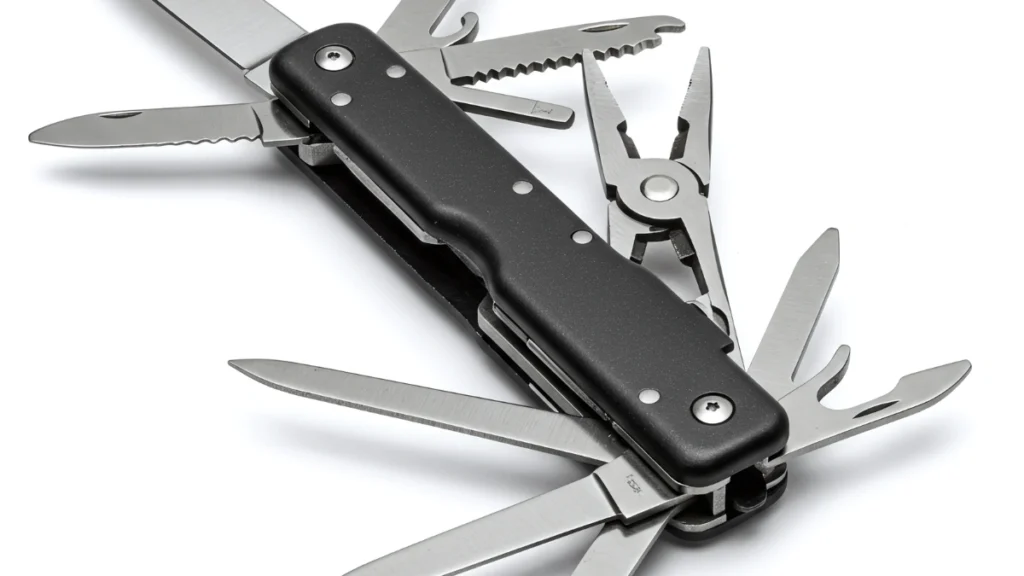
This is the camp workhorse. You’ll use it for everything: cutting rope, repairing gear, slicing cheese for lunch, and opening packages. A good multi-tool (like a Leatherman) or a simple Swiss Army Knife is perfect.
For 2025, you can even find camp-specific tools like the Gerber Stake Out, which includes a knife, scissors, and a tent stake puller.
15. Fire Starter (Multiple Methods)
You need to be able to start a fire for warmth or in an emergency. Never, ever rely on just one method.
Pack a “fire kit” in a small waterproof bag. It should include:
- A Lighter (like a BIC)
- Waterproof Matches (as a backup)
- Fire Starter (like dryer lint soaked in wax, cotton balls with Vaseline, or store-bought fire-starting squares). This helps you get a fire going even with damp wood.
Spark & Blaze Arsenal
Primary Lighter
A reliable Bic Lighter is your quickest and easiest source of flame. Always keep it handy!
Waterproof Matches
Your crucial backup fire starter! Essential for when your primary lighter fails or gets lost.
Dedicated Fire Starter
Bring dryer lint in wax, Vaseline cotton balls, or store-bought squares. Ignites even damp wood!
16. Portable Power Bank / Power Station
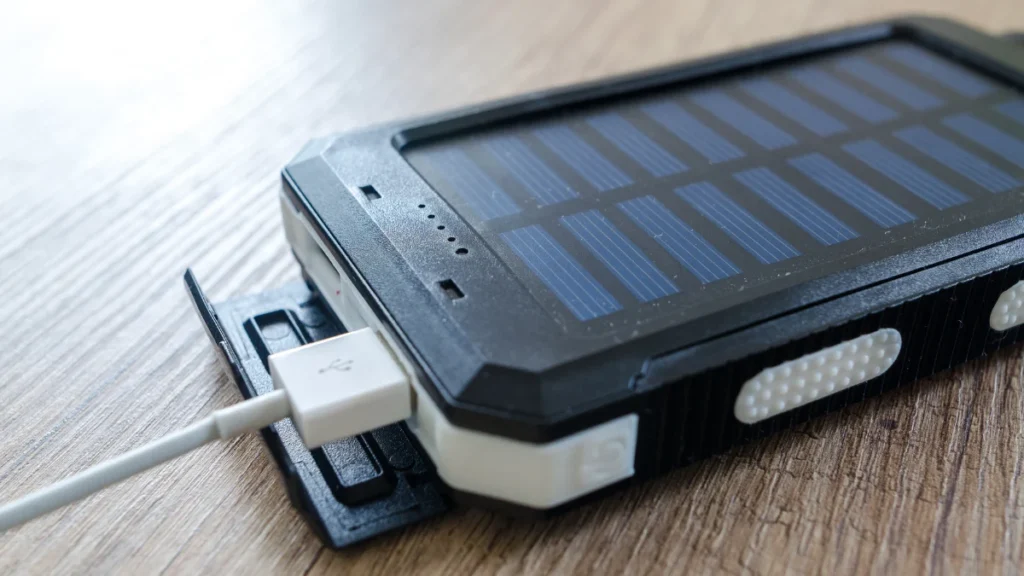
In 2025, this has become an essential. Our “safety” and “navigation” tools (phones, headlamps, GPS) all run on batteries. A dead phone isn’t just an inconvenience; it’s a safety risk.
- For all campers: At a minimum, bring a small power bank (e.g., Anker) to keep your phone charged.
- For car campers: A portable power station (like an EcoFlow or Jackery) is the new must-have. You can run camp lights, recharge all your devices, and even inflate your air mattress.
17. Bug & Sun Protection
This is a serious safety item. NPS data shows that heat-related incidents (like heat stroke) are a more common danger than cold-related ones.
- Sun: Pack broad-spectrum sunscreen (SPF 30+), lip balm with SPF, and a wide-brimmed hat.
- Bugs: Pack an effective insect repellent. For 2025, many campers swear by rechargeable Thermacell devices. They create a “bubble” around your campsite that keeps mosquitoes away without any spray or smell.
Personal Comfort & Clothing
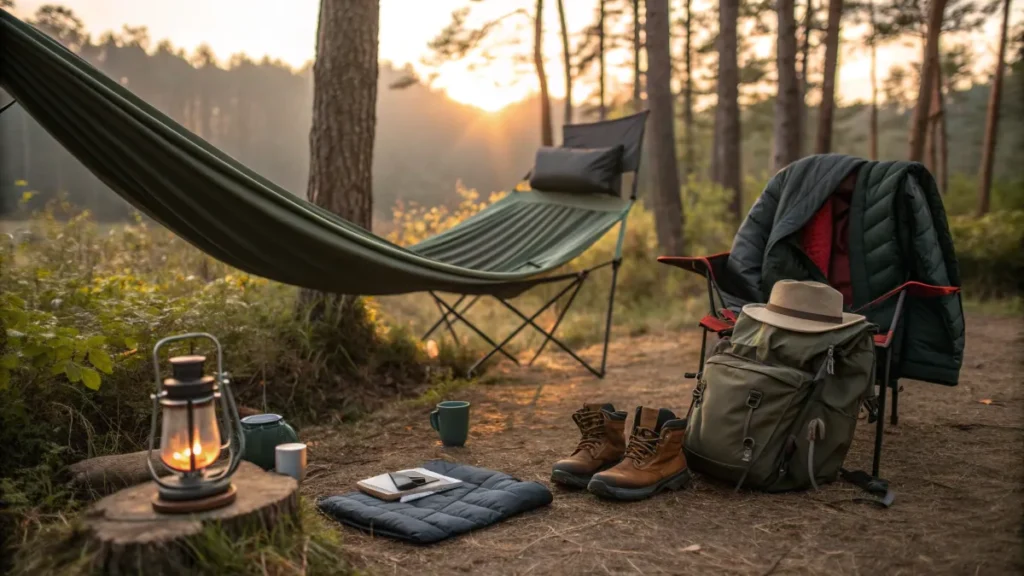
You’ve got your survival needs covered. These final items are what make camping fun and comfortable. This is what to pack for camping 2025 to have a good time.
18. Appropriate Clothing (Layers)
Here is the most important rule of outdoor clothing: No Cotton.
Cotton kills. It’s a simple, true phrase. When cotton gets wet (from sweat or rain), it stops insulating and actively pulls heat from your body. It takes forever to dry.
Instead, dress in layers:
- Base Layer (against your skin): A moisture-wicking shirt made of Merino Wool or Synthetic (polyester). This pulls sweat off your skin.
- Mid-Layer (insulation): A fleece jacket or a puffy down vest. This traps your body heat.
- Shell Layer (protection): A waterproof rain jacket and rain pants. This blocks wind and rain.
Anatomy of Warmth: The Layering System
Shell Layer (Protection)
A waterproof rain jacket and rain pants. This is your outer defense, blocking wind and rain.
Mid-Layer (Insulation)
A fleece jacket or a puffy down vest. This layer’s job is to trap your body heat and keep you warm.
Base Layer (Against Skin)
A moisture-wicking shirt made of Merino Wool or Synthetic (polyester). This pulls sweat off your skin.
By adding or removing these layers, you can be comfortable in any weather. And always pack extra socks.
19. Camp-Specific Shoes
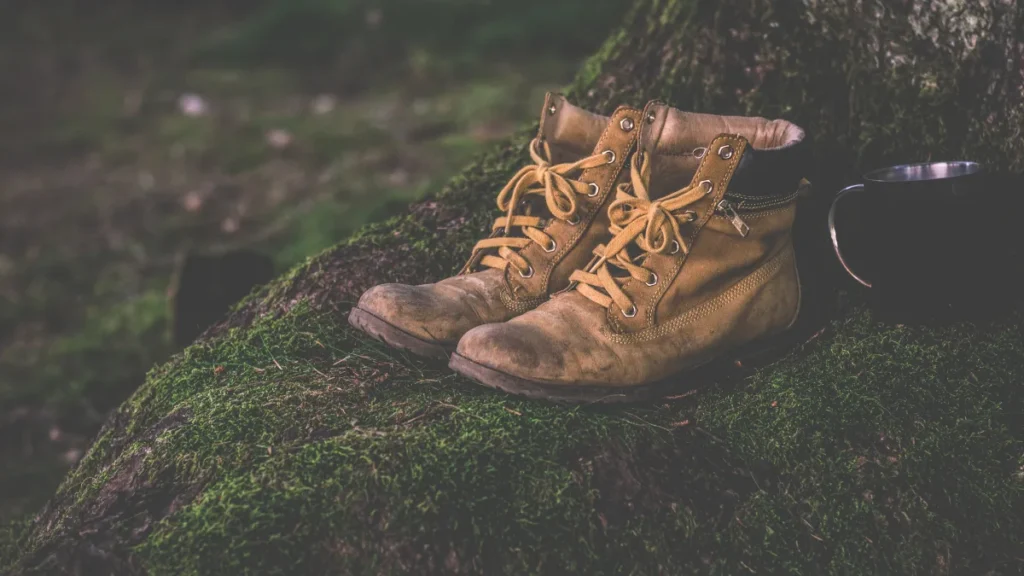
Don’t wear your muddy hiking boots all day and night. You’ll be uncomfortable, and you’ll track dirt all inside your tent.
Pack a separate pair of “camp shoes” that are easy to slip on and off. Think Crocs, sandals, or any slip-on shoe. They are perfect for walking to the bathroom at night or relaxing by the fire.
20. Quick-Dry Towel
A normal cotton bath towel is a terrible idea for camping. It’s huge, and once it’s wet, it will stay wet and smell for your entire trip.
Buy a small, lightweight “camp towel” made of microfiber. It absorbs a lot of water and dries in minutes when you hang it in the sun.
21. Toiletries & Sanitation Kit
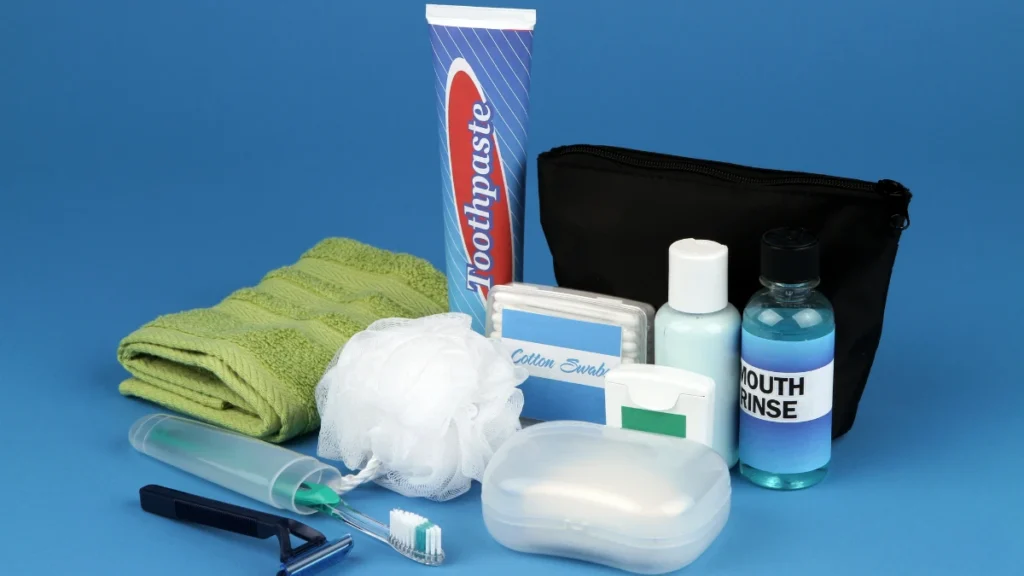
Keep it simple. Pack your essentials in a small bag: toothbrush, toothpaste, biodegradable soap, and hand sanitizer.
If your campsite does not have toilets, you must bring a “cat hole kit.” This includes a small garden trowel and your toilet paper. Following Leave No Trace principles, you must dig a hole 6-8 inches deep (at least 200 feet from water) and bury your waste.

